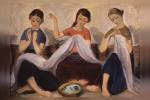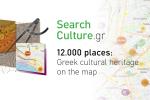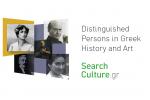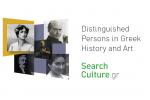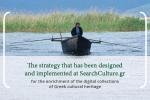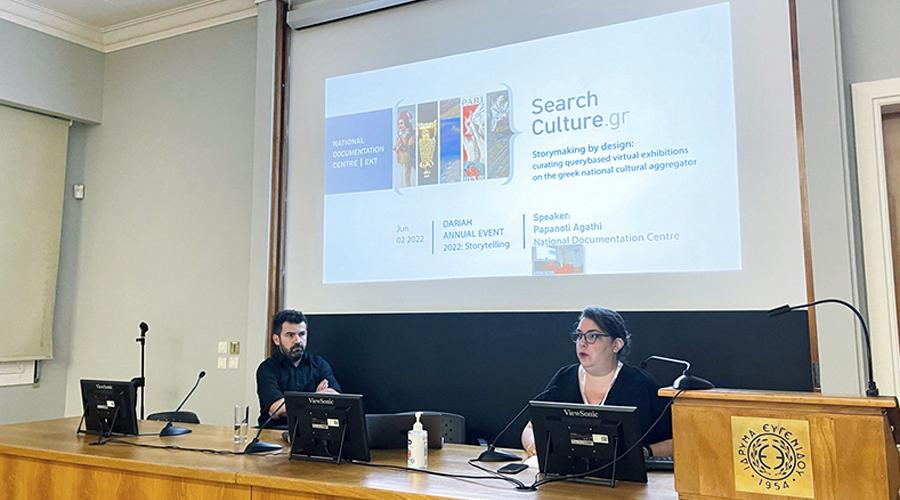
The annual conference of the European Digital Research Infrastructure for the Arts and Humanities DARIAH took place from 31 May to 3 June 2022 in Athens. At the first post-pandemic hybrid conference, members of the DARIAH network - an active network with the mission of empowering academia & research communities with digital know-how - met to exchange strategies, ideas, practices and methodologies for the digital humanities.
At this meeting of the DARIAH community the focus was the power of Storytelling in the Arts and Humanities and how it leads to the creation of emotions and knowledge. The power of narrative as a means of achieving understanding and creating knowledge is deeply embedded in human cultures, reaching back into our written records and looking as far forward as our technological imaginations will go. How we collect, share and use stories tells us a lot about who we are, how we entertain and educate, how we build identities and understand the world and how we relate to our past and future.
The National Documentation Centre (EKT) participated in the Conference with the presentation “Storymaking by design: curating querybased virtual exhibitions on the greek national cultural aggregator“, presented by the archaeologist and curator of SearchCulture.gr Agathi Papanoti.
The presentation focused on the Thematic Exhibitions of the national aggregator of digital cultural content SearchCulture.gr, which connect the diverse content that is collected in the national aggregator from many different organizations. Thematic Exhibitions are stories of special interest, made from grouped together digital items from different collections, which have semantic relevance. In her presentation, Agathi Papanoti explained the methodology of semantic enrichments conducted at SearchCulture.gr and showed how the enrichments are used to create smart searches. She pointed out that ‘in an aggregator, every good search tells a story’.
Agathi Papanoti also presented the Exhibitions Query Form, the tool with which virtual exhibitions are created with and showed some of the many Thematic Exhibitions created by the SearchCulture.gr team . Through a sophisticated interface, the Query Form allows curators to create thematic exhibitions, grouping items retrieved through targeted queries.
The exhibitions are designed in a bilingual interface and include a basic image, title and subtitle, an explanatory text, other resources and bibliography, while they are presented through a functional interface on a dedicated page. The presentation explained the content selection methodologies and the conceptual framework for creating the exhibitions, as well as the strategy devised to promote the richness and variety of the content aggregated in SearchCulture.gr.
As Agathi Papanoti pointed out, the main inspiration for the development of this new functionality was the fact that while performing the enrichment workflows, various stories emerged: a series of children’s photographic portraits from the beginning of the last century, traditional costumes from different parts of Greece, scores and records about Rebetiko music, archives from the Asia Minor Campaign and the integration of refugees in Greece in 1922. As a result of the extensive digital curation carried out by EKT, the fascinating possibilities of the semantic relations between items are highlighted. Thematic Exhibitions is a discovery service that demonstrates how items can work collaboratively, evoking mental, emotional, and creative reactions, activating conceptual connections, and providing aesthetic, sensory, and emotional experiences in a variety of contexts. They cultivate relationships between items, people, locations and events in unpredictable but creative ways and have a huge dynamic for storytelling.
In fact, exhibitions make it possible to become a virtual curator. By performing a smart search, one creates an exhibition in a virtual space where the walls are fluid: with each filtering parameter, results are more focused, in reality telling a sub-story in a new ‘room’. These smaller “stories” appear with each filter click, making the whole process fun and creative. The playful element of storytelling through search and filtering activates the part of our brain that loves knowledge, learning and eruditeness.










